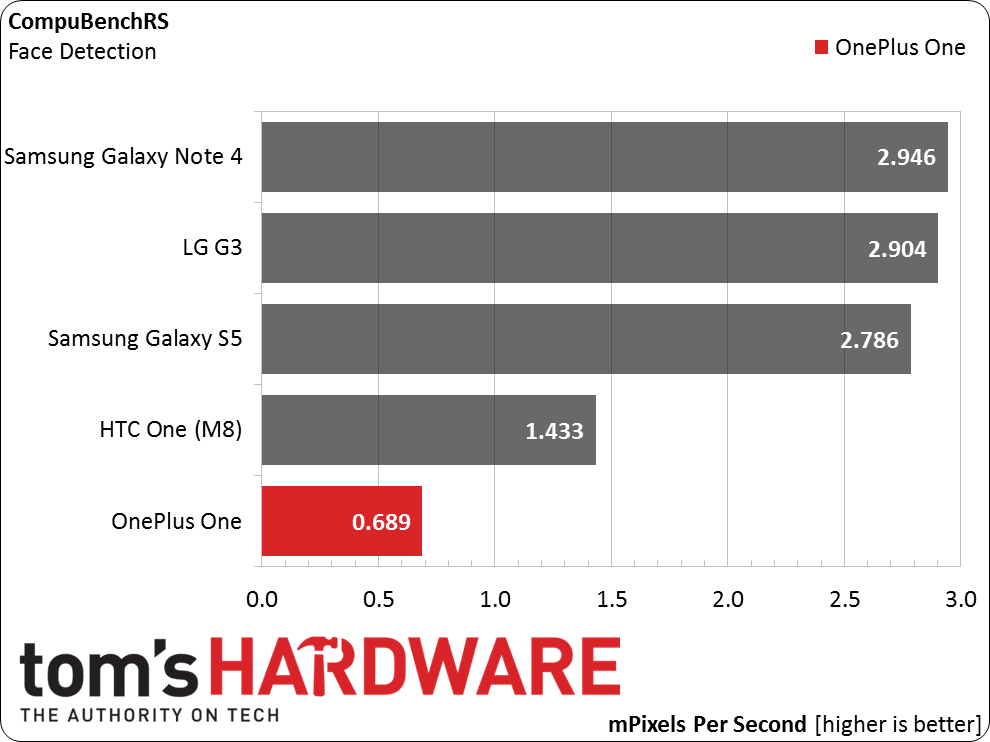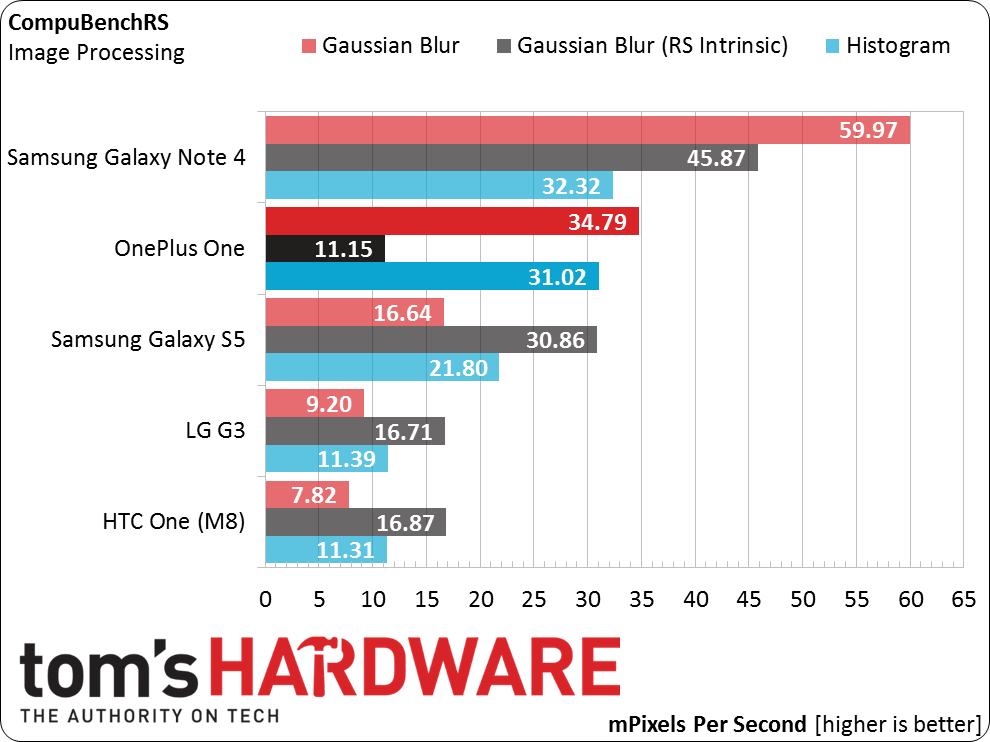OnePlus One Review
The OnePlus One has an off-contract price starting at only $299, but don’t call this smartphone cheap. Hiding behind the OnePlus One’s 5.5-inch HD screen is some high-end hardware.
Why you can trust Tom's Hardware
Results: GPGPU Benchmarks
CompuBenchRS
CompuBenchRS tests the compute performance of multi-core systems supporting the RenderScript API (a component of the Android operating system). The compute API is similar to CUDA or OpenCL, and can distribute parallel tasks across all compute cores, including the CPU and GPU (as of Android 4.2, RenderScript is expanded to run on the GPU, in addition to the CPU of supported systems). On compute-capable GPUs, the benchmark runs on the graphics engine. Otherwise, the tests stress CPU cores. CompuBenchRS sub-tests cover the following categories: Computer Vision (Face Detection), 3D Graphics (Provence - ray tracing), Image Processing (Gaussian Blur, Histogram), Physics (Particle Simulation - 4K), and Throughput (Julia Set, Ambient Occlusion).
Running RenderScript on the GPU requires software support from the video driver. With a 4x performance deficit, the OnePlus One runs the Face Detection test solely on the CPU. It’s difficulty running multithreaded code only compounds the problem.
The OnePlus One shows mixed performance in the image processing tests. It outperforms its Snapdragon 801 peers in the Gaussian Blur and Histogram tests, but falls well behind in Gaussian Blur (RS Intrinsic).
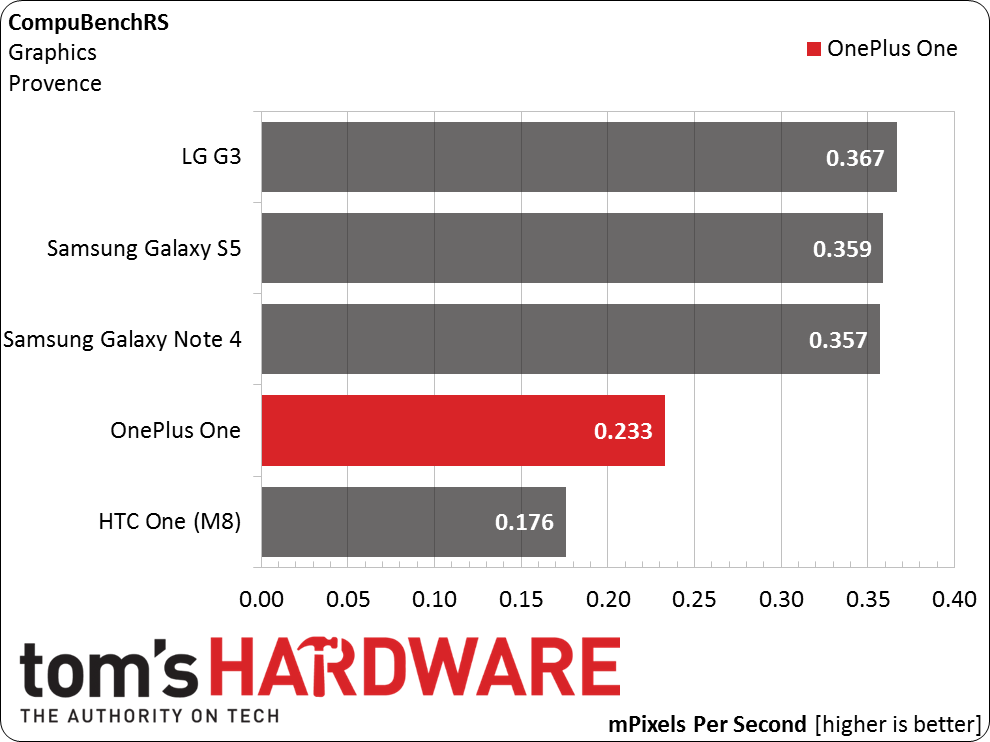
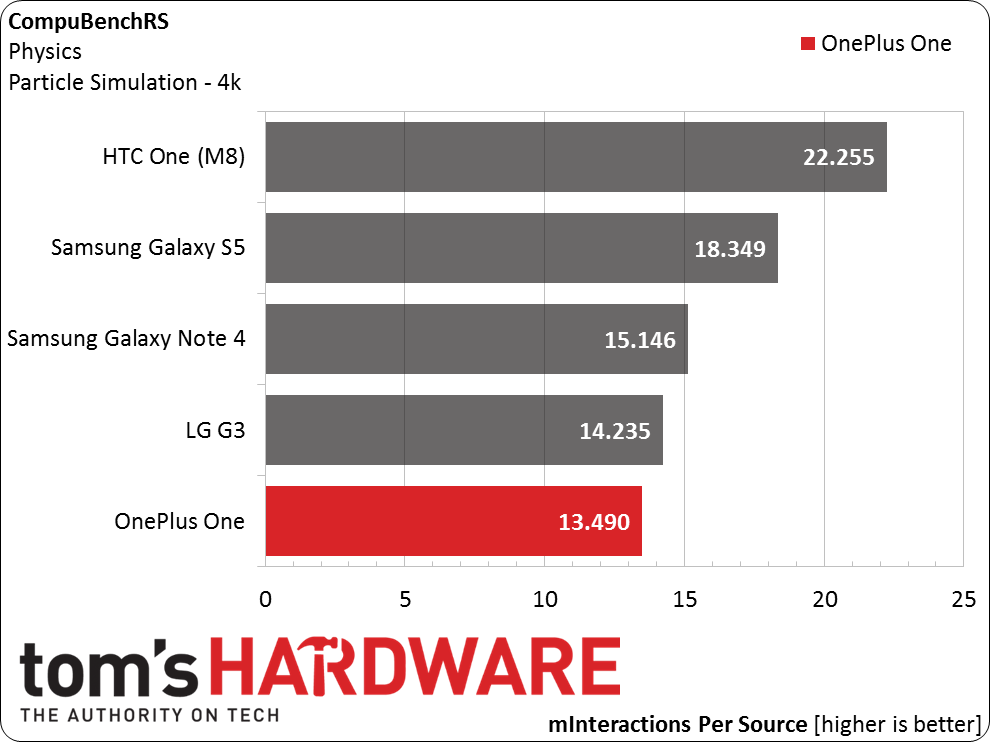
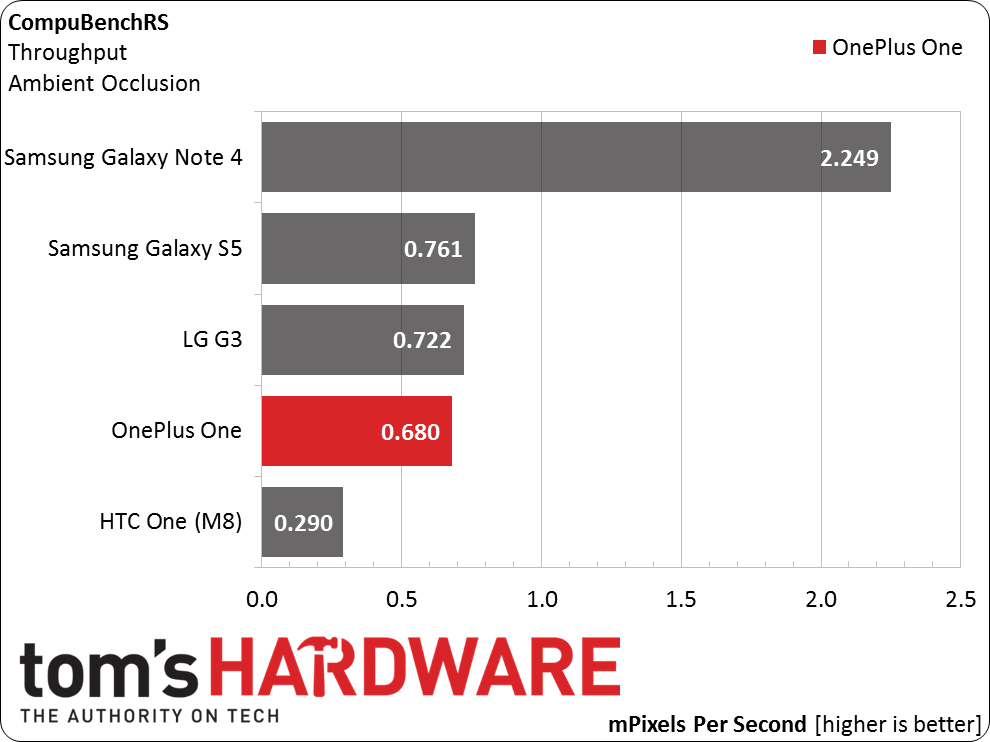
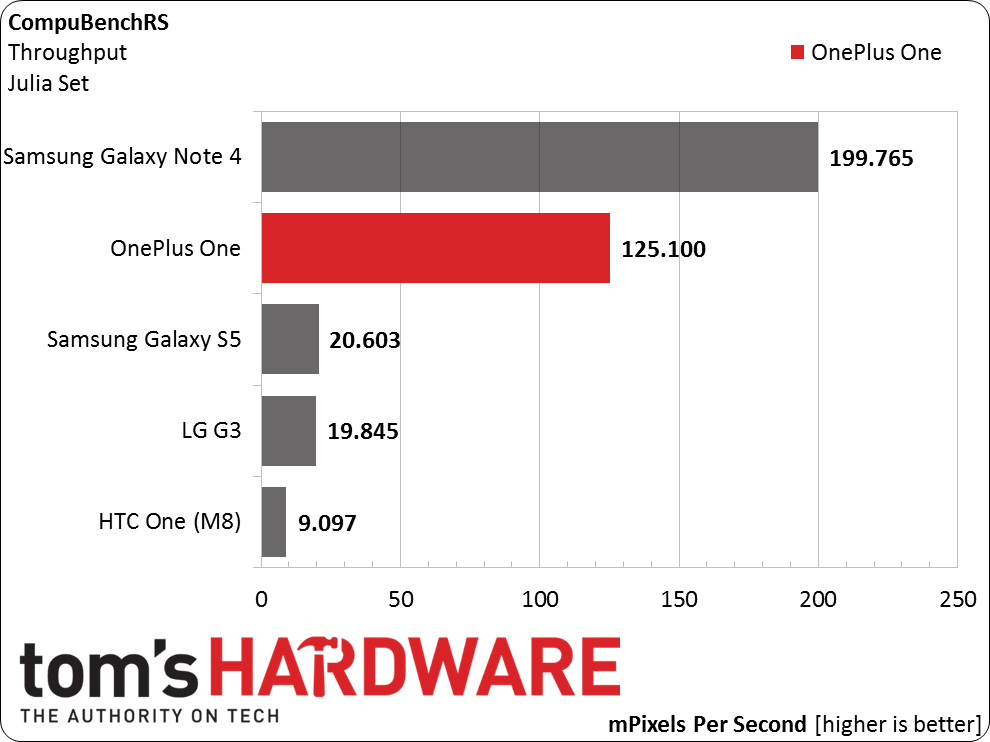
The OnePlus One continues to deliver inconsistent performance across the remainder of the RenderScript benchmarks. While coming in at or near the bottom of our charts in most tests, it does well in the Julia Set throughput test.
It’s important to note that these benchmarks have more to do with driver level support for the RenderScript API than actual hardware limitations. Granted, the OnePlus One’s issue with multithreaded code reduces performance further when it fails to utilize its GPU, but this effect is difficult to discern with so much variation between devices running the same hardware.
Get Tom's Hardware's best news and in-depth reviews, straight to your inbox.
Current page: Results: GPGPU Benchmarks
Prev Page Results: GPU Core Benchmarks Next Page Results: Display Measurements-
MrEssesse You forgot to mention how the iphone 6 plus costs 299 $ with a 2 year contract, unlocked its around 700 $.Reply -
Mike Coberly So the device itself supports the CDMA bands, but is not compatible with one of the major CDMA carriers here in the US? What a shame. :( This could easily replace my now aging Galaxy Note 3.Reply -
Memory Ever Summary is all kind of noise voice out because it's a China phone.Reply
If this is a phone from Apple, people will only ask when they can buy it. They don't real care about of the specification.
This is the different. -
house70 Got one for my wife, she loves it, esp. that she doesn't have to keep an eye on the battery icon anymore. This thing will run forever... Getting another one for myself.Reply
For about USD 350 you can't really do any better. They could sell it for 550-600, but they won't.
CM12 (Lollipop- based) is around the corner.
Only thing they botched really big was the sales; this phone had a huge potential to when first launched, but making it almost impossible to buy doesn't help. -
uplink-svk As owner of three 1+1 phones I'm heavily dissapointed with this phone. I really loved the Crysis Music trailer, and there I decided to go for this phone.Reply
Things that really dissapointed me are:
- display is yellowish, at least was on all three pieces I owned
- it's made out of cheap plastics, I don't care it feels "great", I wanted metalic phone, like they said it's gonna be in the beginning
- one of the pieces was doing purplish photos
- it's way too big
- CM is fine, but still misses some of the basic features offered by 3rd party GUi from Samsung/HTC, which are in my eyes normal - RMAing the 1+1 is a hell, You need to send it back, wait and stuff, thank You, but no
In general I bought the first one for 290 euro, second one for 250 euro, and third one for 390 euro, which are pretty good prices in my country for these phones, and all were a disaster :\ -
rexter This is what Nexus 6 should have been - price-wise. Watch out Google here's OnePlus. Too bad, you'll need an invitation to get one, why not invite me instead if I give them my e-mail; this just show that the company don't have much stocks to share to every, I suppose? and that pink wall paper reminds me of Ubuntu. I like the black one if I can get my hands on one... or two.Reply -
Karksken Can you use this one as phone too or is it just a tablet(review). Smartguys please give us on smartPHONES also the real info as Phone quality, connection quality, e.a. info when you get the out of memory error when there is still a lot of mem available and you SIM is disconnected. How does the apps interact with the phone part.Reply -
D A The invites are easy to get with a little patience. I just bought three of them in the last tow weeks. All my invites I got where from google + where previous buyers are giving out the invites hourly. Jut go onto Google plus and do a search for "Oneplus Invite", then click "MOST RECENT". be patient and keep refreshing and be ready to respond to a post where someone is offering an invite... respond with your email address that you would like one. I did this for all three of my invites, there was only one person that did not send me the invite. I was able to get all the invites within an hour.Reply
